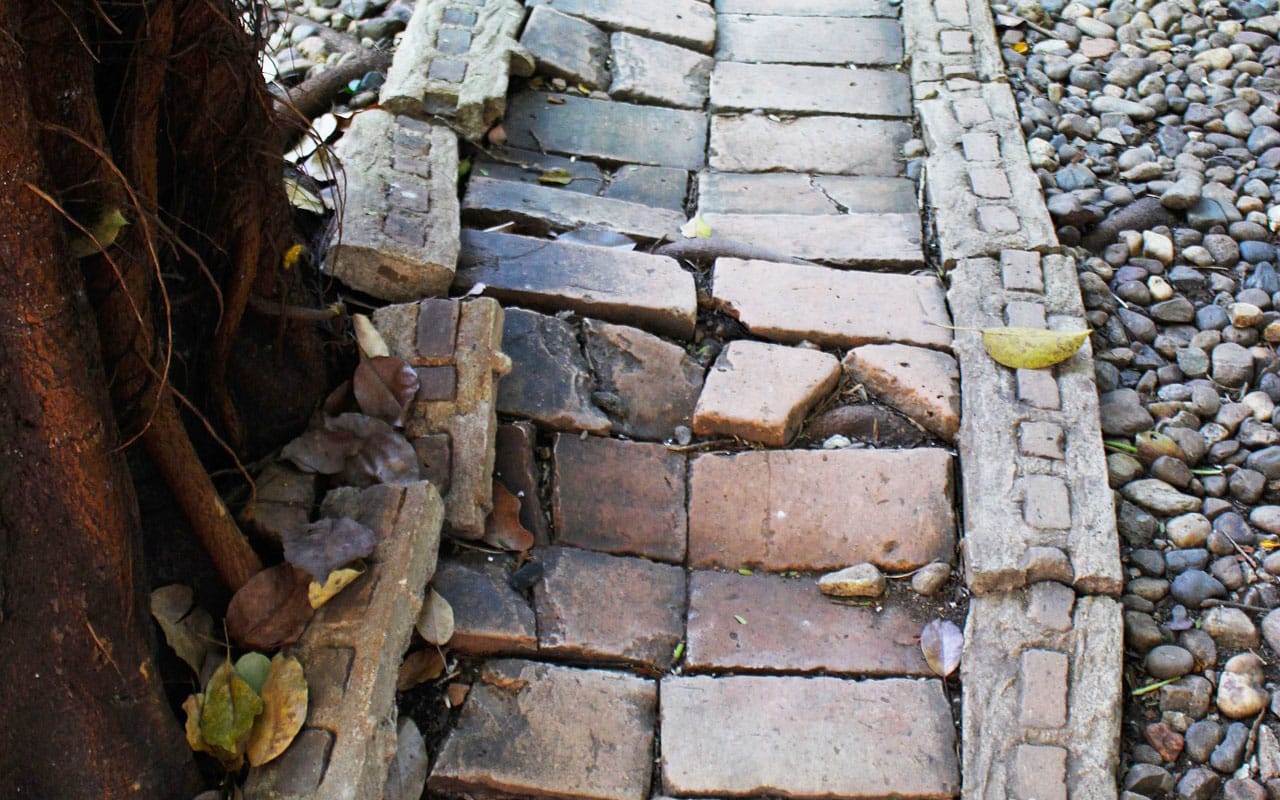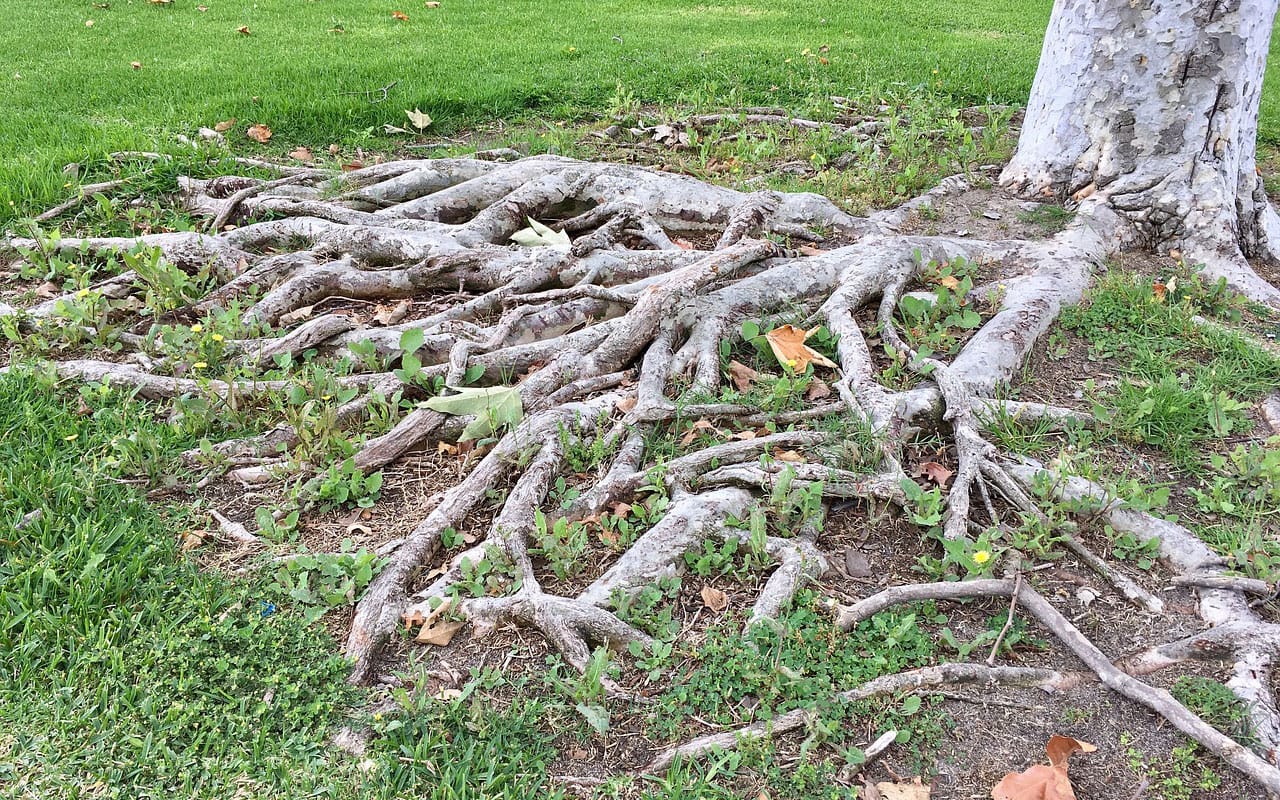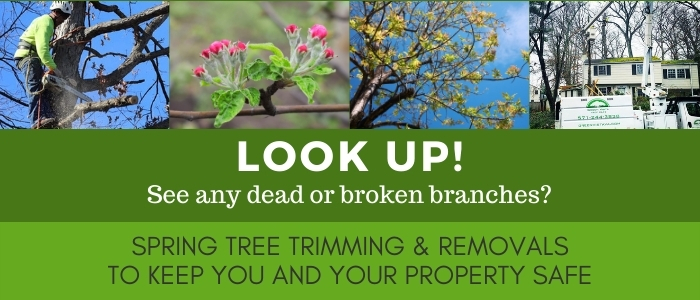
Tree Roots Causing Problems? Find the Real Root of the Issue
Problems caused by tree roots can be found in every neighborhood in northern Virginia – although, in many cases, those problems are preventable with a little forethought and regular maintenance.
What’s the problem with tree roots?
Roots are how a tree gets much of the water, oxygen, and nutrients necessary for its survival. The farther the roots spread, the better able to tree is to get the resources it needs.
A wide network of vigorous roots also helps to anchor the tree so it’s less likely to fall during high winds or a storm.
But sometimes what’s best for the tree isn’t what’s best for sewer pipes, building foundations or nearby paved areas…
Often, the only time we notice tree roots is when they get in our way. Maybe they’ve been found blocking your sewer system, sneaking in through your home’s foundation, or trying to break through your driveway or sidewalk. Or perhaps they have emerged above ground and are a tripping hazard or are making it difficult to mow the lawn.
While these issues are problematic, frustrating, and oftentimes very expensive to fix, they are not necessarily the tree’s fault.
Don’t believe us? Keep reading.
Tree Root Problem # 1 – Roots in Your Sewer System (or Other Pipes)
Root growth is opportunistic – tree roots tend to take the path of least resistance. When it comes to pipes, roots can only go where there is already an opening – they can’t “break into” a pipe. But if there’s a leak in the pipe, roots will quickly find the source and grow into it.
If there are roots in your sewer system, it’s usually due to a cracked joint in the pipe. Cracks and leaks are typically caused by shifting and movement in the surrounding soil as it shrinks and expands in response to moisture levels.
Once roots enter a sewer system or other water-carrying pipes, they are very difficult to remove. You’ll need to have the roots mechanically cleared from the pipes at least every year (an expensive process). Alternatively, there are chemical foam treatments that can be used to kill roots within the sewer pipes.
However, the only permanent solution is to replace the pipes to eliminate any cracks or gaps through which roots can enter.
Tree Root Problem #2 – Tree Roots in Building Foundations
If there is tree root damage to your foundation, one of two things (or possibly both) is true:
- the tree was planted too close to the building, and/or
- there was a recent drought in the area.
Plant the Right Trees in the Right Places
We can’t stress enough the importance of planting the right tree in the right place.
Did you know that most trees have as much mass below ground as they do above it? Or that the majority of that is concentrated in the top 18 to 24 inches of soil? Tree roots can spread anywhere from 2 to 6 times as far as the tree’s canopy, depending on surrounding conditions and tree species.
The best advice is to plant trees well away from your house (or any other building), as well as paved areas (like sidewalks and driveways) and sewer and water lines. A minimum of 10 feet is suggested for all trees, while those with spreading or water-hungry roots are better placed 25+ feet away. And trees with vigorous, invasive roots systems, such as willows, American elm, and silver maple, are best kept even farther away.
Trees need plenty of space to grow (both above and below ground) but some are more petite than others. If you have limited space, check out our article on best trees for small spaces.
Keep Trees Well-Watered
Drought conditions can cause foundations to shift due to the lack of moisture in the soil. And because trees also remove moisture from the soil in an attempt to survive, they may indirectly add to foundation problems.
Roots exist, in part, to bring moisture and nutrients to the tree. If there isn’t enough moisture in the soil surrounding the tree (such as during a drought), roots will grow toward any nearby sources of water. That includes foundation plantings, such as flowers and shrubs, that receive regular water from an irrigation system. As with sewer and water pipes, tree roots will infiltrate cracked foundations in search of moisture. So while you may find roots growing into, or even through, your home’s foundation, the roots aren’t the cause of the cracks or leaks.
To prevent roots from entering your home, be sure that your trees are adequately watered so they don’t have to seek out water elsewhere.
Tree Root Problem #3 – Cracked & Lifted Sidewalks, Driveways, and Patios
As a tree grows and the root system expands, it can lift nearby concrete sidewalk slabs, crack paved areas, and overturn pavers or flagstone surfaces. Usually, this happens because the tree was planted where it shouldn’t have been. So what can you do about it?
If the tree is still young, you may be able to move the tree to a better location.
If the problem is caused by a mature tree that can’t be moved, you have four options:
- move the sidewalk/driveway/patio,
- make more space for the roots,
- remove some of the roots (we don’t recommend this) or
- remove the tree.
Moving the concrete or paved area away from the tree is a better choice than simply repairing is; repairs won’t last long if the underlying problem isn’t addressed. For example, reroute a sidewalk further away from the tree (you’ve probably seen those meandering sidewalks before) to give the roots more room to grow, or create a bridge over the roots. You’ll see the bridge option often in state parks.
Other options include using an air spade to remove some of the soil below the roots (particularly if it’s highly compacted) to create more room for them. The sidewalk will need to be replaced in this instance, and a meandering version still might make the most sense.
Some choose to prune away offending roots, but this should be attempted with caution, as roots help a tree remain stable. In many cases, roots will grow back within a few years anyway. Cutting too many roots or the wrong ones can kill the tree, so root pruning should only be attempted by a tree care professional.
Never pave over the roots of a tree, as doing so will almost certainly kill the tree and lead to many problems in the future. If you have to put in a driveway, consider bending it away from the tree (similar to the meandering sidewalks), or using pavers. The pavers are less likely to crack and easier to replace.
Tree root issue #4 – Roots are a Tripping Hazard
Exposed roots usually happen from soil erosion or from frost heaving, where the soil repeatedly freezes and thaws, contracting and expanding with each freeze/thaw cycle and pushing roots toward the surface.
Exposed roots should NOT be cut or covered with soil. Cutting the roots can stress or kill the tree, and covering them with a thick layer of soil can cut off the oxygen supply.
With exposed roots, mulch is usually the best option. Cover the roots with one or two inches of compost or wood chips (more is not better!), ensuring that the mulch doesn’t touch the tree’s trunk. Avoid “mulch volcanoes” at all costs.
Mulch helps retain moisture, keeps the ground from eroding further, and acts as an insulator, protecting against further frost heaving.
If the Tree Just Has to Go
Sometimes, roots just create too many problems and the tree has to be removed. However, cutting down the tree may not be enough; roots can continue growing after tree removal and the stump can sprout new growth. You’ll need to get rid of the entire tree stump by grinding it out if you want to permanently solve the problem.
If you think your tree may need to be removed (see these handy tips to help you decide), contact us to schedule a consultation.
Wrapping Up …
Roots are a vital part of a tree and should be protected whenever possible. By planning ahead, planting trees in the right place, proactively managing root growth and regularly inspecting foundations and sewer lines, you’ll give your trees the best chance of growing into healthy, beautiful specimens that enhance the value of your property.
In need of tree care services?
Give us a call at 571-244-3838 or request a quote online!
More Articles From Green Vista Tree Care









